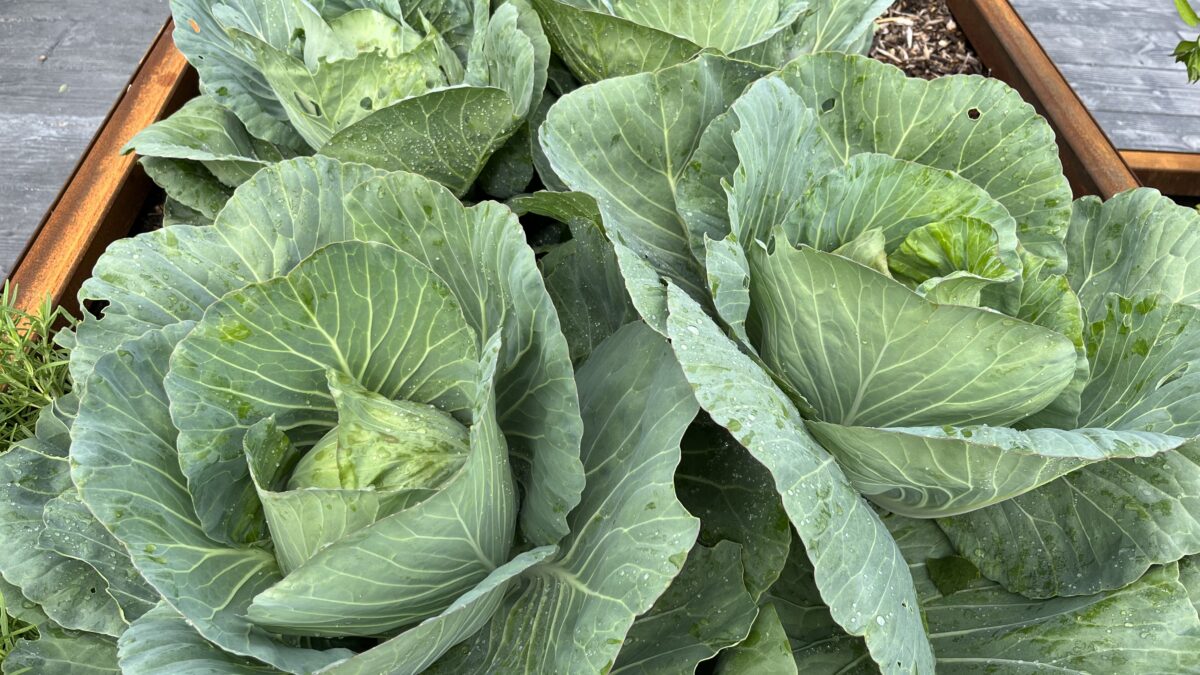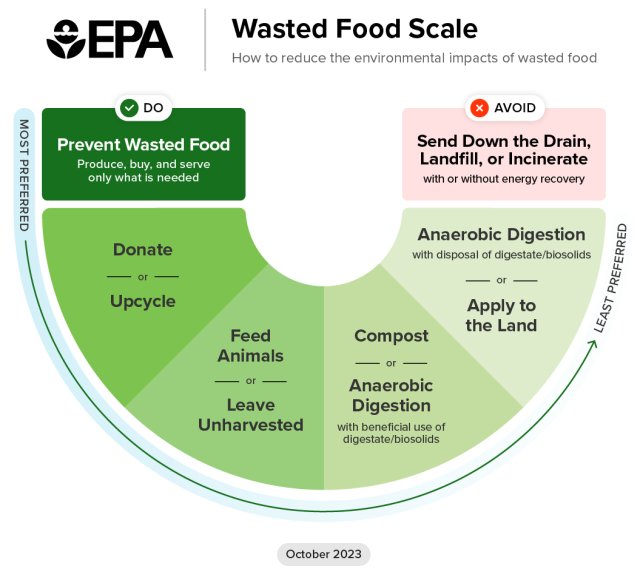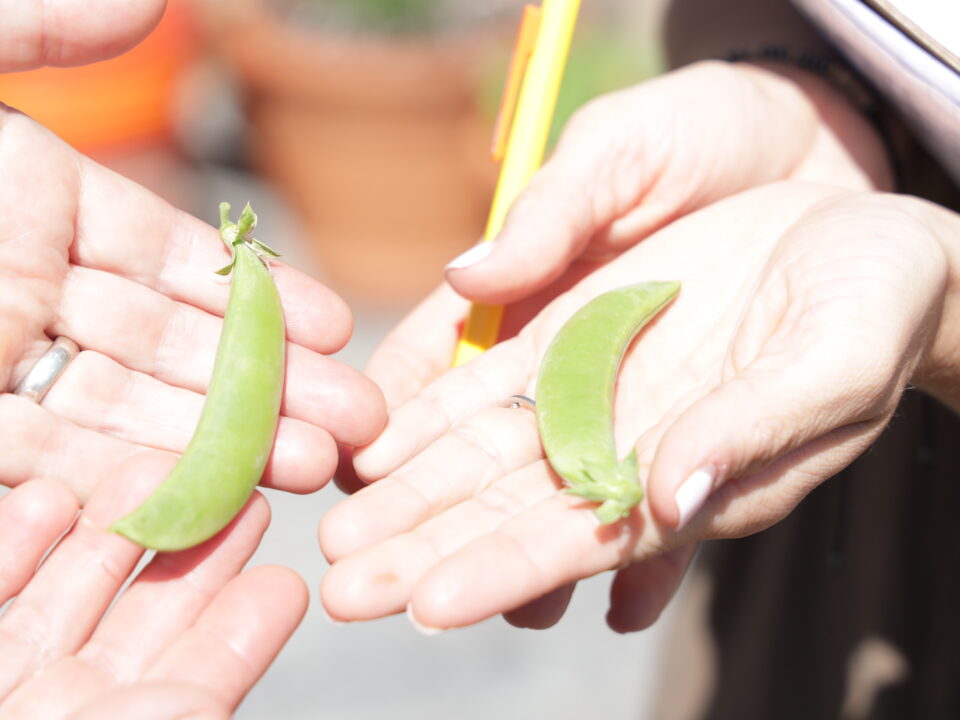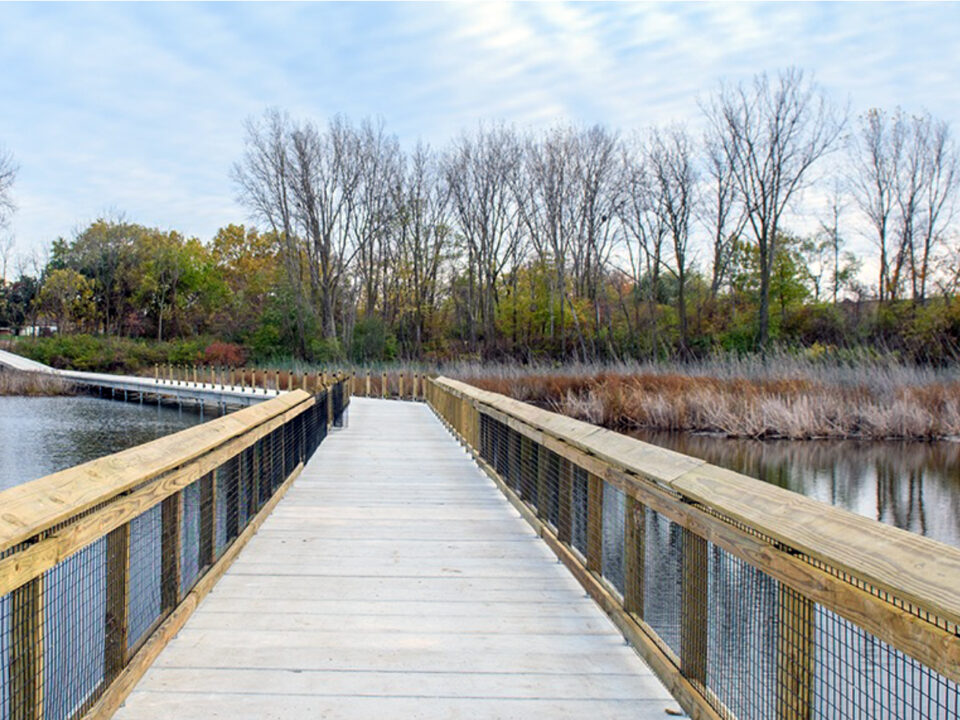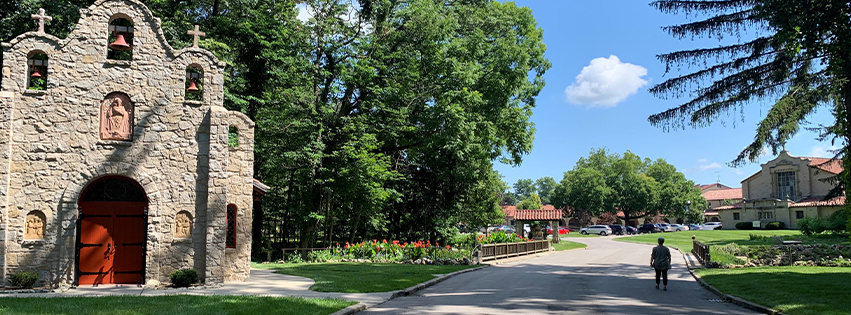
Powered by Connection
May 17, 2024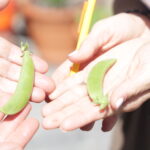
Nurturing Nature through Organic and Regenerative Agriculture
July 1, 2024by Sara Grunberg
June 24
What a Waste!
Sustainable Management of Food
Imagine a world where every carrot gets its chance to shine and every banana fulfills its destiny. That’s the magic of composting: the parts that are left of the food we eat can become nutrient-rich compost that grows healthy new food. The alternative is a terrible waste.
Wasted food is a growing problem, contributing to an estimated 78 million tons in the U.S. in 2022, which equates to 33% of food supply that was unsold or uneaten (ReFED). That is almost 145 billion meals’ worth of food that is being wasted (ReFED). When wasted food ends up in landfills, it hinders the ability of the decomposed food to return to the soil. In addition, as the food rots, it produces methane, which is a gas byproduct of the anaerobic bacteria that breaks down the food. Methane is a greenhouse gas 25 times more potent than carbon dioxide at trapping heat in the atmosphere. It is estimated that wasted food is responsible for 58% of landfill methane emissions (EPA). Through this chemical breakdown and release of methane, the greenhouse gas emissions generated from wasted food are a main source contributing to climate change. Furthermore, the decomposition process generates liquid runoff called leachate, which can potentially contaminate soil and water sources.
Keep Toledo/Lucas County Beautiful estimates that if we continue filling up our landfill at our current rate, we will need to create a new landfill in 30 years. Landfills typically are placed among minority neighborhoods, resulting in harmful health effects to these populations due to the water and air pollution. In the U.S., over 97% of food waste is estimated to be buried in the landfills, nearly 50% coming from our kitchens (Levis, 2010). This is a substantial percent of food waste deposited in landfills that is deemed inappropriate instead of being biodegraded into a nutrient-dense, usable form. Therefore, if we allocate our wasted food to other disposal methods, we can extend the live span of our current landfill, requiring less space that is occupied by our waste. To bolster these efforts, the Environmental Protection Agency (EPA), is promoting sustainable management of food that seeks to reduce food waste and the associated impacts over the entire waste life cycle. Through sustainable food management, such as donating, feeding animals, composting, and more, resources for the future can be conserved while reducing greenhouse gas emissions that contribute to climate change.
According to the EPA, “wasted food” is used as an umbrella term to describe food that was not used for its intended purpose. This term is used to convey that a valuable resource, food, is being wasted instead of “food waste”, which implies the food no longer has value. “Wasted food” is intended to describe the value of food and when that is wasted, the value you are losing. In 2008, only about 2.6% of wasted food was recovered and turned into soil, due to improper disposal (Levis, 2010). By establishing sustainable food management practices, methane emissions from landfills can be reduced, natural resources can be conserved such as land, water, and energy, and wasted food can instead return nutrients to the soil. The EPA suggests using the Wasted Food Scale to determine the best way to manage wasted food (Figure 1). This scale prioritizes actions that prevent and divert wasted food from disposal.
Figure 1.
Composting is one way to divert wasted food from the landfills. Composting can be defined as “a biological process whereby regular introduction of air by mechanical turning stimulates aerobic microorganism to reduce organic materials to a more stable material similar to humus” (Taiwo, 2011). Essentially, as the food rots, it is broken down by microorganisms into a usable form that can be applied as nutrient rich top soil. The Sisters of St. Francis of Sylvania, Ohio have pledged to composting as a commitment to caring for the earth and mitigating wasted food out of the landfills. Since October of 2022, bin locations have been established for Sisters to drop off their compost. The grounds crew pick up the collected food scraps from the drop-off locations and deposit the fresh compost material on top of a mound, behind the Hermitages. It is then mixed with leaves and other yard trimmings, and turned frequently until it is decomposed into rich compost. By January 2024, 90 gallons of wasted food was diverted from the landfills here on campus and reducing our contribution of methane emissions. Approximately 50 individuals contributed to this effort, creating 150 cubic yards of compost that is applied all around campus, including the Grateful Harvest community garden. When added to soil, compost improves soil structure, enhances soil fertility, retains moisture, and promotes healthy plant growth. It provides essential nutrients like nitrogen, phosphorus, and potassium, as well as micronutrients, which are vital for plant health. Additionally, compost helps to suppress plant diseases and pests, reduces the need for chemical fertilizers, and supports a diverse ecosystem of beneficial microorganisms in the soil.
There are a number of ways to reduce wasted food and enhance your food recovery. Here are some options:
- Take inventory of your pantry and refrigerator before going to the store
- Create a meal plan and make a list of ingredients you need from the store
- Get creative! Use ingredients you already or leftovers for meals
- Store your fruits and veggies properly
- Buy “ugly” foods, that some might think are too ugly to buy and go to waste
- Use your freezer, which extends the life span of food
- Compost—you can even freeze your compost scraps so they don’t smell!
June Sustainability Challenge
This month let’s practice keeping food out of the garbage. Instead, turn your old food and scraps into nutrient-rich food, either by composting or by creating flavorful broths.
Savory Vegetable Broth
Throw veggie scraps (onion peels, garlic peels, carrot scraps, potato peels, etc) into tub and store in the freezer. When the container is full, toss the veggie scraps in and just barely cover with water. Add salt, pepper, and any other spices to taste. Add two tablespoons of apple cider vinegar. Stir together and bring pot to a boil. Once boiling, put the lid on and lower to a simmer for about two hours. Strain broth from scraps (which you can now toss in the compost bin.)
Now you have your very own homemade broth! The broth is delicious on its own or used in recipes.
Ready to Start Composting?
Either build your own backyard compost system, or join the citywide composting effort and take your scraps to a drop-off location.
There are drop off sites on the Sylvania Franciscan campus (no dairy or meat) on Mondays, Wednesdays and Fridays. For full composting, (dairy and meat allowed), Keep Toledo/Lucas County Beautiful and the Toledo Metroparks now have three drop off locations, the Glass City Metropark, Toledo Botanical Gardens, and Swan Creek Metropark. This service is free to the public and accepts all kitchen scraps including meat and dairy.
Share your success pictures! Email manders@sosf.org and help make the world a place where every meal is cherished and every ingredient lives up to its full nutritious potential.
Together, small choices can add up to a healthy planet for future generations.
Sara Grunberg
 In the role of Sustainability Coordinator for Lourdes University and the Sylvania Franciscans, Sara Grunberg works as the common link between all campus ministries in achieving a sustainable campus. Sara was raised in the Franciscan tradition as a student at Sylvania Franciscan Academy, later graduating from Notre Dame Academy. At the University of Dayton, she earned a B.S. in Environmental biology, worked on a student-run farm, and learned beekeeping. From there, she attended the College of Charleston for a master’s degree in environmental and sustainability studies.
In the role of Sustainability Coordinator for Lourdes University and the Sylvania Franciscans, Sara Grunberg works as the common link between all campus ministries in achieving a sustainable campus. Sara was raised in the Franciscan tradition as a student at Sylvania Franciscan Academy, later graduating from Notre Dame Academy. At the University of Dayton, she earned a B.S. in Environmental biology, worked on a student-run farm, and learned beekeeping. From there, she attended the College of Charleston for a master’s degree in environmental and sustainability studies.


